12 Rare Depression Glass Collectibles Seen at Auction
Finding rare Depression glass can be an exciting experience for any collector. What sets these pieces apart from others is often their exceptional design, historical context, or limited production. These rare items often come with a high price tag at auction, reflecting their desirability. For collectors, the rarity of these pieces only adds to their charm and appeal. Whether you’re an experienced collector or just starting, knowing what makes Depression glass rare will help guide your next purchase.
This post may contain affiliate links, which helps keep this content free. Please read our disclosure for more info.
Jeannette Glass Company – Cherry Blossom Pattern
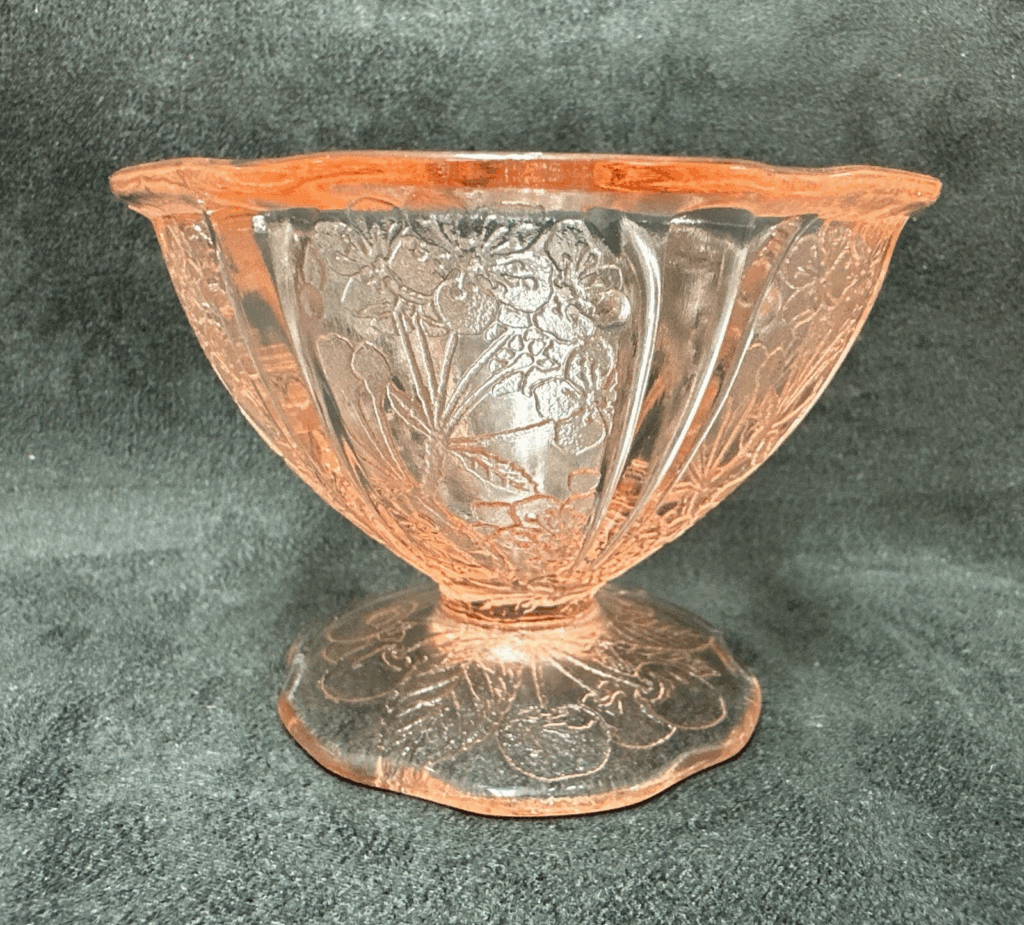
The Cherry Blossom pattern, produced by Jeannette Glass Company between 1930 and 1939, is one of the most beloved and sought-after Depression glass patterns. It features delicate, embossed cherry blossoms and foliage on a soft pink background, making it a favorite for collectors. This pattern is rare due to its limited production, and pieces are highly valued for their intricate floral details. Auction prices for Cherry Blossom glass can range up to $6,479, depending on the condition and piece. The floral motif and the soft pink color continue to make this pattern a timeless collectible.
Collectors often look for the full set of Cherry Blossom glassware, including cups, plates, and bowls. The rarity of certain pieces, such as the rare opaque milk glass variant, further elevates its value. Pieces in excellent condition, without chips or cracks, are the most sought-after at auctions. The intricate design and pastel color palette make it a highly decorative piece in any collection. Cherry Blossom glassware is often regarded as one of the most beautiful patterns to come from the Depression era.
Hazel-Atlas Glass Company – Royal Lace Pattern
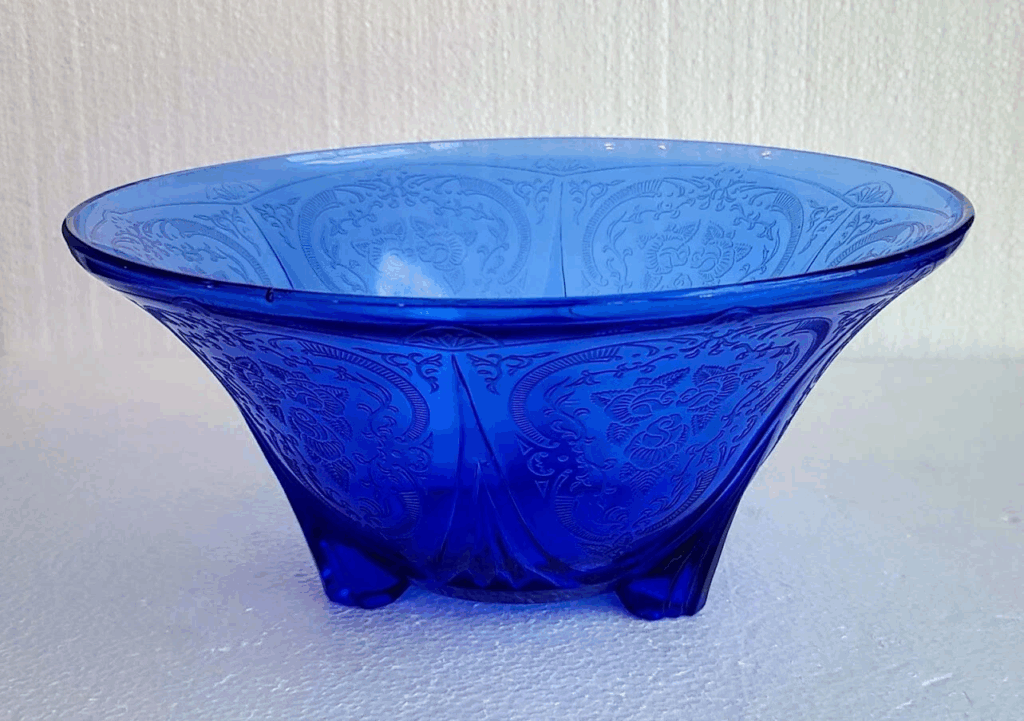
Hazel-Atlas’s Royal Lace pattern, produced from 1934 to 1941, is known for its elegant lace-like pattern and was made in several colors, including clear, green, and cobalt blue. The cobalt blue version is particularly rare and highly prized by collectors. The Royal Lace pattern is unusual because of its delicate, floral design with a geometric touch, which was uncommon at the time. At auctions, pieces from this pattern, especially in cobalt blue, can fetch up to $750 depending on the condition. The beautiful detailing and the rich, deep color make it an enduring favorite in Depression glass collections.
Due to its rarity, especially in the cobalt blue color, this pattern is often considered a major find at glassware auctions. The intricate lace design, when combined with the beautiful glass color, elevates its appeal. Many collectors seek out individual pieces like serving bowls, pitchers, and plates to complete their sets. The Royal Lace pattern’s combination of form and function makes it both a decorative and useful addition to any collection. Its long-lasting popularity is a testament to its classic beauty.
Anchor Hocking Glass Corporation – Fire-King Turquoise Depression Glass
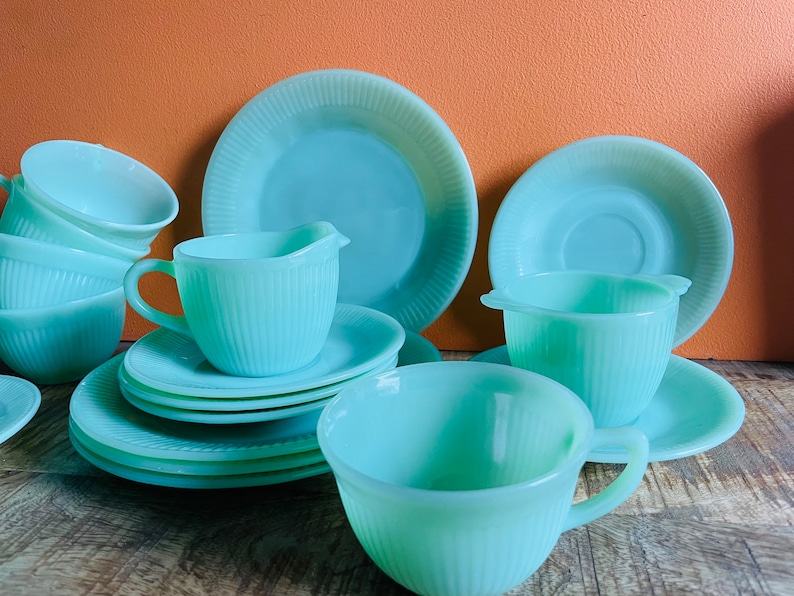
Anchor Hocking’s Fire-King Turquoise Depression glass, produced between the 1940s and 1960s, stands out for its vibrant turquoise blue color. This particular glassware is rare because it was made in limited quantities and the color itself was a departure from the typical colors used in Depression-era glass. Auction prices for these pieces can range from $500 to $3,500, depending on their condition and rarity. The Fire-King brand is well-known for its high-quality, durable glassware, and its turquoise pieces remain highly collectible. The striking color and the durability of the glass are two of the main reasons collectors seek out these pieces.
The Fire-King turquoise line includes dinner plates, mixing bowls, and even coffee mugs, all of which are popular in today’s glassware market. Pieces in pristine condition, especially those without chips or cracks, are especially valuable at auctions. The unique shade of turquoise, along with the Fire-King branding, makes these items a standout in any collection. The rarity of this color and the demand from collectors have made Fire-King turquoise glassware an iconic part of Depression glass history. Many collectors focus on completing sets to increase their value and desirability.
MacBeth-Evans Glass Company – American Sweetheart Pattern

MacBeth-Evans’s American Sweetheart pattern, produced from 1930 to 1936, is a beautiful example of Depression glass with its delicate floral and heart-shaped motif. The pattern was originally produced in pink glass but was also made in clear and satin finishes. What makes this pattern rare is its low production compared to other patterns of the era, which makes it harder to find in good condition. Pieces from this pattern have been known to fetch prices up to $595 at auctions, particularly those in mint condition. The subtle elegance of the American Sweetheart pattern makes it a cherished piece among Depression glass collectors.
Collectors particularly value American Sweetheart glassware for its intricate design and delicate color. The pattern’s floral heart motifs are subtly embossed, adding depth and charm to the pieces. Items like bowls, plates, and cups are highly sought after, especially when found in complete sets. Due to its rarity, especially in satin finishes, the American Sweetheart pattern is often considered a highlight of Depression glass auctions. Its timeless beauty and limited production contribute to its status as one of the most desirable patterns.
Federal Glass Company – Madrid Pattern
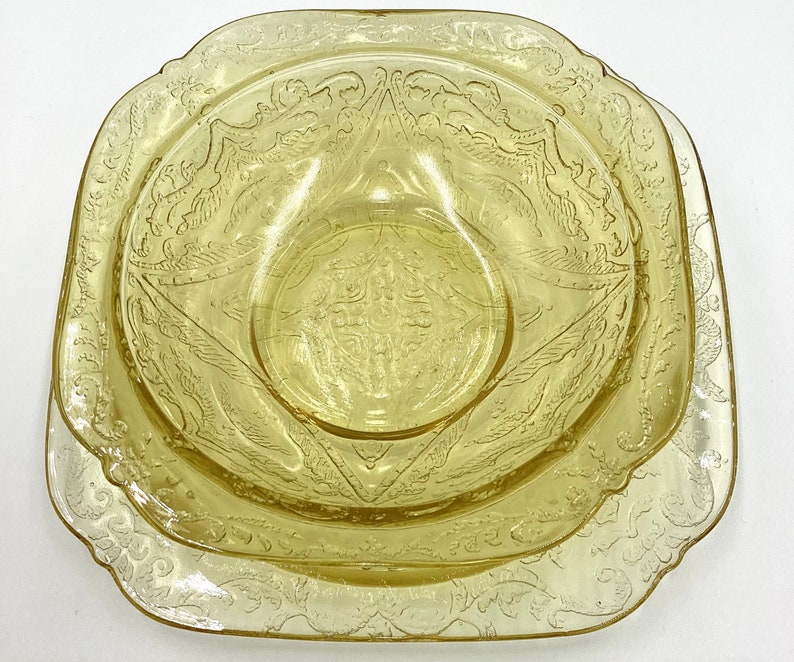
Federal Glass Company’s Madrid pattern is known for its bold geometric design, which was a departure from the more traditional floral patterns seen in Depression glass. Produced between 1932 and 1939, this pattern was made in a variety of colors, including amber, green, and clear. The Madrid pattern is rare due to the limited production of certain colors, especially the green variant, which is highly sought after. Auction prices for green Madrid pieces can reach up to $1,000, depending on their condition and rarity. The geometric design, paired with the vibrant glass colors, makes this pattern stand out in any Depression glass collection.
The Madrid pattern’s clean lines and geometric shapes give it a unique appeal compared to other Depression glass patterns, which often featured floral or intricate designs. Collectors appreciate the vibrant colors and the versatility of the pieces, which include serving dishes, plates, and pitchers. Green and amber pieces are particularly desirable, and those in excellent condition often attract high bids at auctions. The pattern’s distinct design has made it a staple in many Depression glass collections, with collectors constantly on the lookout for rare finds. As one of the more recognizable patterns, Madrid is a true highlight at any auction.
Jeanette Glass Company – Adam Pattern

The Adam pattern by Jeanette Glass Company, produced during the 1930s, features a blend of floral and geometric motifs, making it unique within the Depression glass world. This pattern is considered rare due to its limited production and the intricate design, which was difficult to replicate. Pieces from the Adam pattern, especially those in pink or amber, have been known to fetch up to $300 at auctions. The combination of floral relief and geometric patterns makes it stand out from other Depression glass designs. Its beauty and scarcity have made it a favorite among collectors.
The Adam pattern’s delicate floral design is enhanced by its soft pastel color, adding to its timeless appeal. Although it was produced in various colors, pink and amber pieces are particularly coveted by collectors. The pattern’s unique design, which combines both organic and geometric shapes, sets it apart from other glassware of the era. Items such as bowls, cups, and plates are particularly sought after in auction settings. As a rare and valuable find, the Adam pattern continues to capture the attention of Depression glass enthusiasts.
Hazel-Atlas Glass Company – Chevron Pattern

Hazel-Atlas’s Chevron pattern, produced during the 1930s, is known for its distinctive zigzag design, which resembles a chevron shape. The unusual mechanical design makes this pattern rare, especially in colors like green and amber, which were produced in limited quantities. Due to its rarity, Chevron pieces, especially in mint condition, can fetch prices up to $500 at auctions. The bold design and bright colors make it a standout pattern in the Depression glass community. Collectors often seek out this pattern for its unique, eye-catching appearance and its historical significance.
The Chevron pattern is appreciated for its simple yet striking design, which contrasts with the more common floral or scroll patterns seen in other Depression glass. It was made in various colors, but the green and amber variants are particularly valued. Items like creamers, sugar bowls, and plates are especially sought after in auctions. The geometric simplicity of the chevron design offers a modern touch to vintage glassware, making it a popular choice among collectors. The rarity of certain pieces, particularly those in excellent condition, ensures that they remain highly valuable.
Anchor Hocking Company – Miss America Pattern
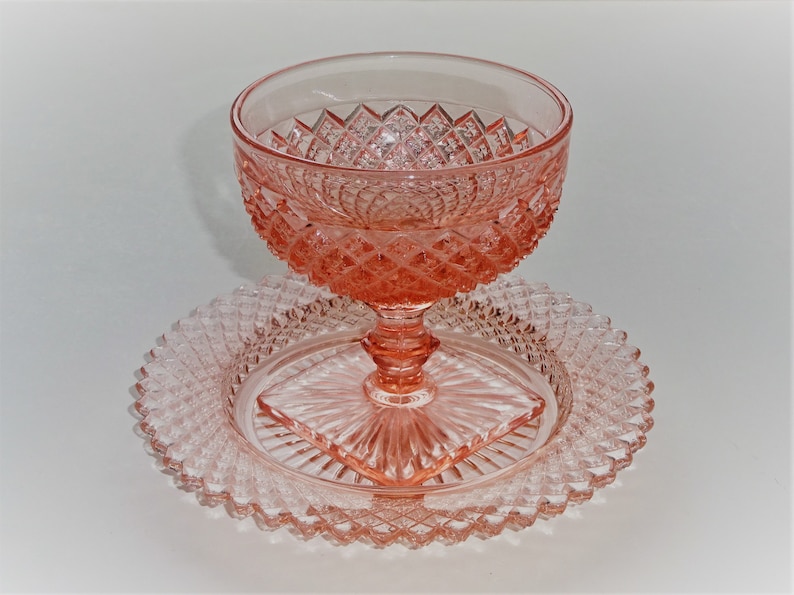
Anchor Hocking Company’s Miss America pattern, produced from 1933 to 1936, is distinguished by its starburst design, which was considered revolutionary at the time. The pattern is rare due to its limited production and the difficulty in finding pieces in excellent condition. Auction prices for Miss America pieces can reach up to $170, especially for complete sets. The starburst motif adds a dynamic element to this Depression glass, making it a standout piece in any collection. The historical significance and unique design have made Miss America a collectible gem.
The starburst design in the Miss America pattern is what truly sets it apart from other glassware of the period. Items like dinner plates, bowls, and cups are the most commonly sought after in auctions. The clean lines and symmetrical design make it an appealing addition to any collection, especially for those who appreciate geometric patterns. Miss America glassware is often valued for its aesthetic appeal and its place in Depression glass history. It remains a popular choice for collectors looking to add rare, unique pieces to their collections.
Jeannette Glass Company – Doric and Pansy Pattern

Jeannette Glass Company’s Doric and Pansy pattern features a floral design with raised relief pansy motifs, making it a rare and highly desirable piece. Produced during the 1930s, this pattern was relatively limited in production and is difficult to find in perfect condition. Items from the Doric and Pansy pattern, especially in pink, have been known to sell for up to $400 at auctions. The delicate floral design, combined with the rarity of the pieces, makes it a prized collectible. The soft pink color and floral motifs continue to attract Depression glass collectors.
Collectors often seek out the Doric and Pansy pattern for its elegance and the level of detail in its design. The raised pansy motifs are a unique feature that sets this pattern apart from other Depression glass. The glass is often found in pink, but clear and satin finishes are also available, each adding its own charm. Items like plates, bowls, and pitchers from this pattern are especially sought after in auction settings. Its rarity and timeless beauty make the Doric and Pansy pattern a valuable addition to any collection.
Federal Glass Company – Patrician Pattern
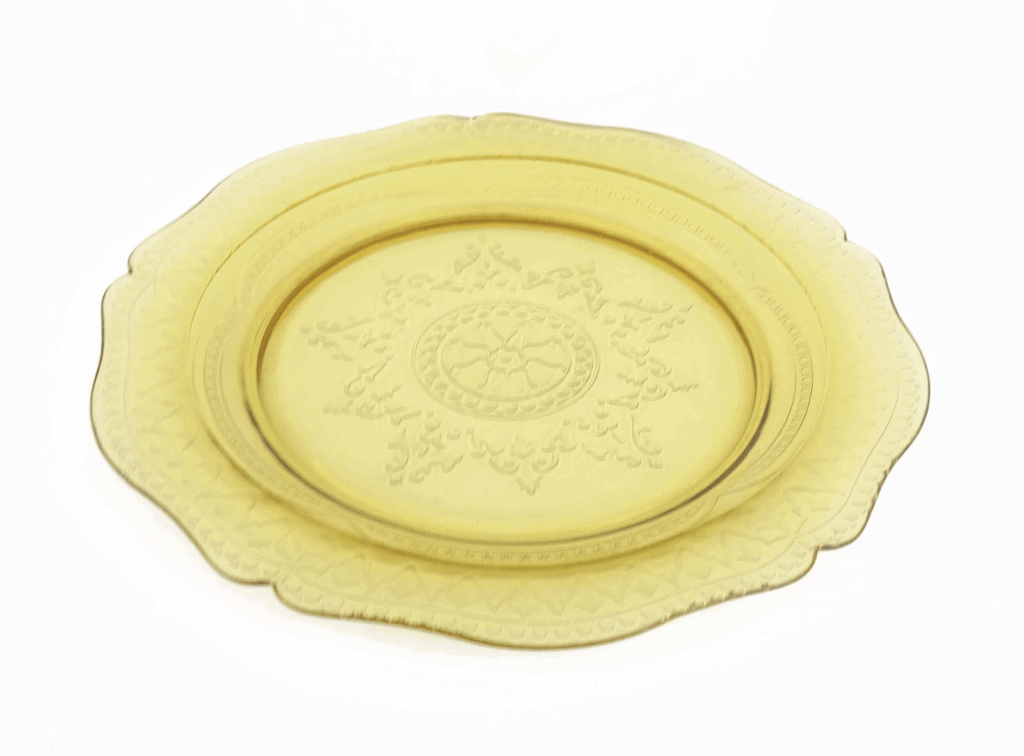
The Patrician pattern by Federal Glass Company, produced between 1933 and 1937, is known for its unique spoke-like design, which was rare for the era. This geometric pattern was produced in a variety of colors, including amber and green, but green variants are especially rare and highly sought after. Auction prices for green Patrician pieces can reach up to $100, depending on their condition and scarcity. The clean lines and intricate design make this pattern a standout in the world of Depression glass. Collectors highly value this pattern for its unique design and vibrant color.
The Patrician pattern is distinctive for its radial, spoke-like motifs, which are often found on serving dishes and bowls. This design adds a modern, almost art deco feel to the glassware, setting it apart from other, more traditional patterns. The green variant is particularly rare, with complete sets fetching the highest prices at auctions. The timeless appeal of the design, along with its vibrant color, ensures that the Patrician pattern remains a coveted find. It continues to be a favorite among collectors who appreciate the combination of form and function.
Anchor Hocking Glass Corporation – Cameo Pattern
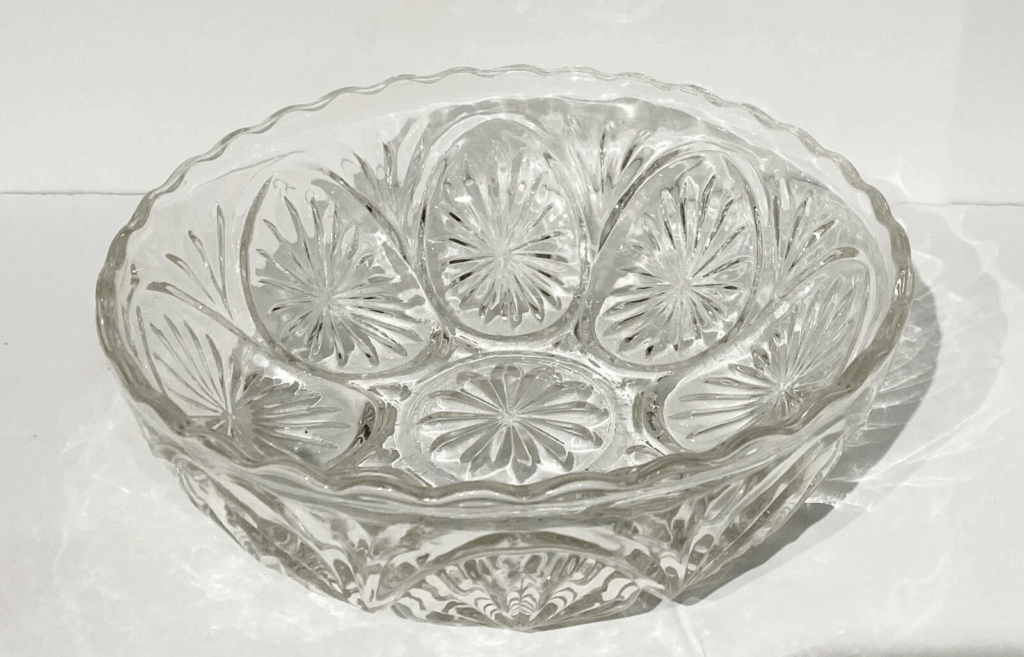
Anchor Hocking’s Cameo pattern, produced from 1930 to 1934, is known for its raised floral design, offering an elegant and vintage touch to any collection. The unusual design makes this pattern rare, as the raised floral elements were more complex to produce than typical flat designs. Pieces from the Cameo pattern, particularly in excellent condition, can be worth up to $300 at auctions. The design’s softness and intricate detailing make it a cherished pattern for collectors of Depression glass. Its rarity and historical appeal ensure its enduring popularity.
The floral relief in the Cameo pattern adds both texture and beauty to the pieces, making them highly attractive. Items like dinner plates, creamers, and serving bowls are especially desirable. The soft, translucent colors, often found in pink or clear, enhance the vintage aesthetic of this pattern. Its limited production and the craftsmanship involved in making each piece make it a rare find at auctions. The Cameo pattern remains a favorite among those who appreciate vintage elegance and quality glassware.
Jeanette Glass Company – Doric Pattern
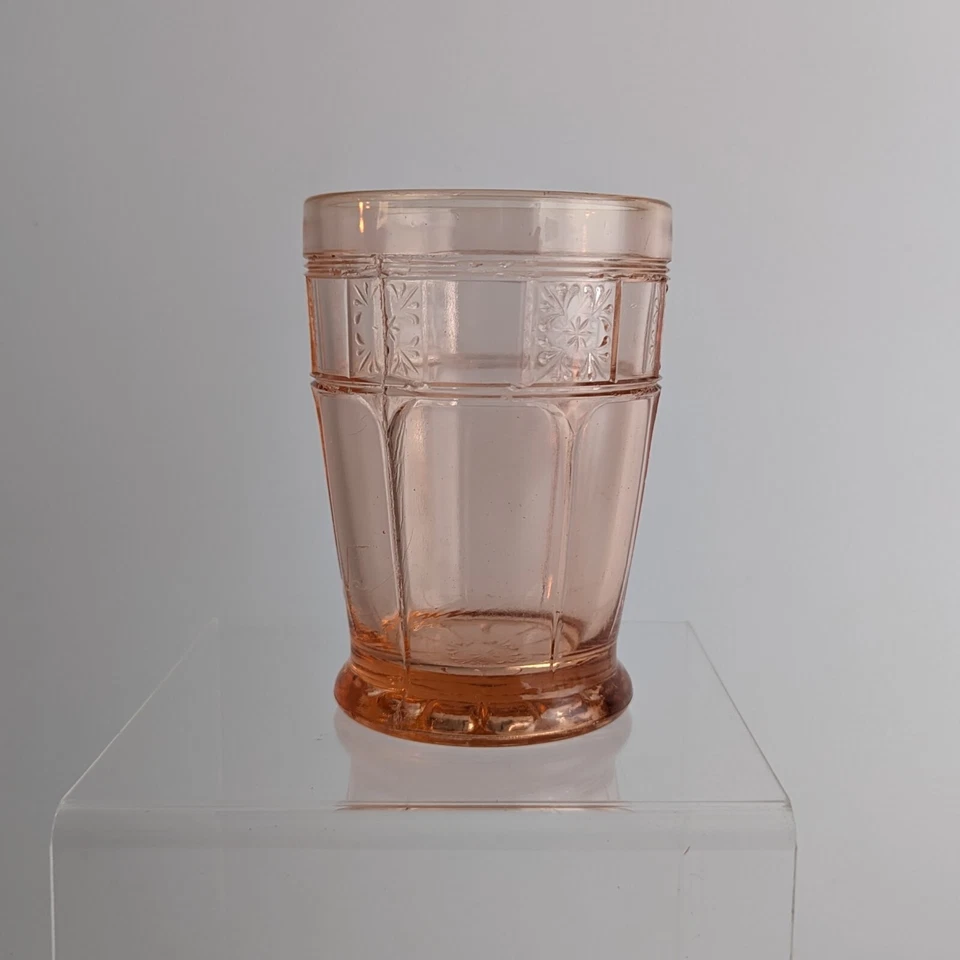
The Doric pattern by Jeannette Glass Company features a distinctive column-like design and was produced during the 1930s. The unusual design is what makes this pattern rare, especially since it was produced in limited quantities. Items from the Doric pattern, especially those in mint condition, can be valued at up to $300 at auctions. The column-like design adds a unique architectural element to this Depression glass, making it a sought-after piece. Collectors value it for its elegant simplicity and scarcity.
The Doric pattern’s columns and geometric shapes provide a refreshing contrast to more floral patterns seen in other Depression glass pieces. This pattern is often found in clear or pink glass, each offering a different aesthetic. The limited production and distinctive design make it highly desirable among collectors. Plates, bowls, and pitchers from this pattern are particularly popular at auctions. The Doric pattern’s timeless beauty and rarity continue to make it a prized addition to any Depression glass collection.
This article originally appeared on Avocadu.
